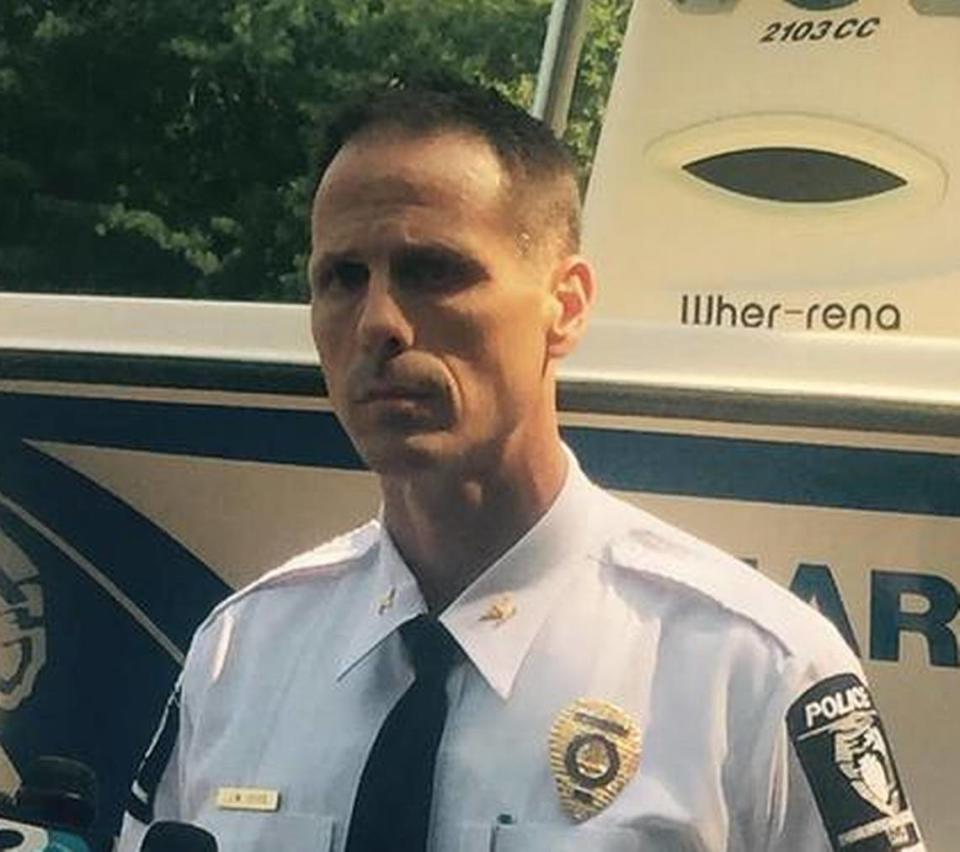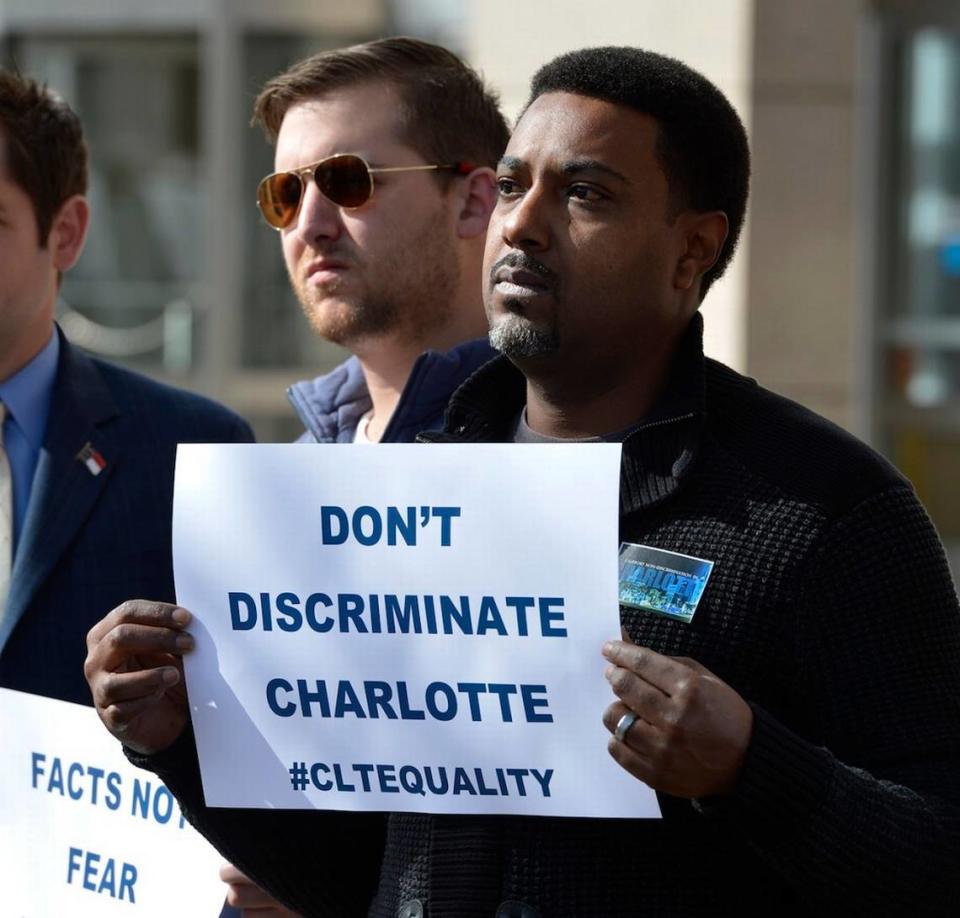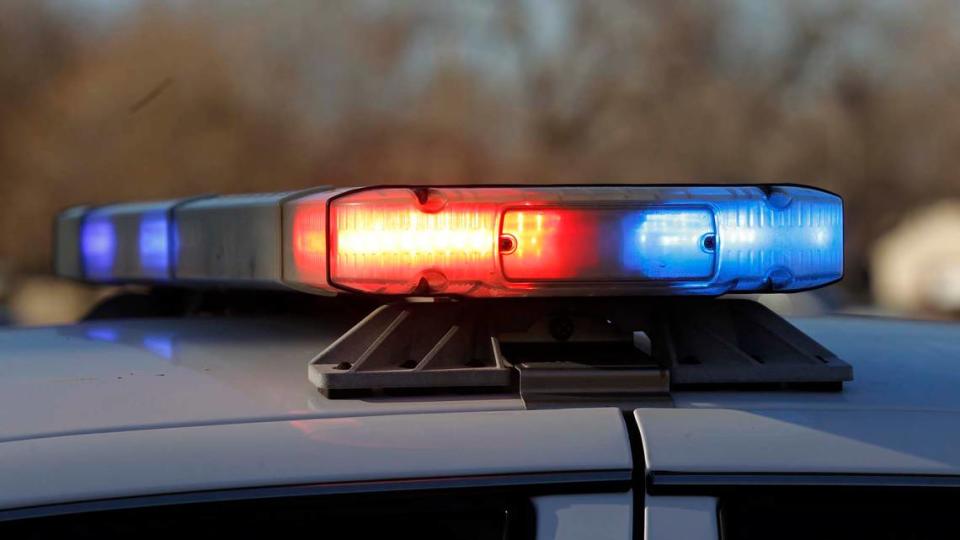Black drivers disproportionately stopped, searched, analysis of CMPD data shows
Six years ago, Corine Mack was looking for a friend’s house in Dilworth when the flashing lights of a Charlotte-Mecklenburg police car came on behind her. The officer told her she had been speeding, she said. Then, he asked what she was doing in the neighborhood.
Mack, who is Black, said she knew exactly what was happening. So she did what any self-respecting NAACP president would have done. She asked for the officer’s name and immediately called his boss, then-CMPD Chief Rodney Monroe.
“You assume that because I’m Black that I know nobody. ... You don’t own these streets,” she recalled saying to the officer.
On the phone, Mack told Monroe that one of his officers was “harassing” her because she was in a white neighborhood. Monroe assured her that she would not receive a ticket, she said.
Activists in Charlotte have long said police officers stop and search Black people and their neighborhoods more often.
A Charlotte Observer analysis of traffic stop data shows there is evidence to support that. Black motorists are disproportionately represented in traffic stops and nearly three times as likely to be searched than white drivers, even for stops as minor as seat belt violations. Different areas of Charlotte see search rates that vary between 1% and 16%.
The Observer analyzed nearly 150,000 traffic stops made by CMPD officers from January 2019 to November 2020. The data — which the city of Charlotte posts online — shows a limited view of a common interaction between police and civilians.
But it does include information on the driver’s race, age, sex, why police pulled the driver over, and in which CMPD patrol division the stop occurred. The data also detail whether police conducted a search and whether the officer gave a verbal or written warning, issued a citation or made an arrest.
The investigation found:
▪ Black people make up 57% of the traffic stops in the city while being 35% of the population.
▪ Only 5% of all traffic stops resulted in a search of the driver, passengers or the vehicle. But the rate differs between races. Overall, 7% of Black drivers were searched compared with 2.5% of white drivers.
▪ For the most common stops — where an officer gave the reason as speeding, running a stop light or sign, or vehicle regulation or equipment problems — Black motorists were more than twice as likely to be searched as whites.
▪ Search rates differ across Charlotte. In the Metro Division — which includes the heavily-Black Beatties Ford corridor and parts of Tuckaseegee Avenue and Statesville Road — about 16%, or around one in six drivers, are searched during a traffic stop. (About 80% of the residents there are Black, according to demographic information provided by CMPD.)
▪ By comparison, only 1-3% of drivers are searched in the Providence, South and Independence Divisions. Those three divisions approximately encompass the area between Park Road and Independence Boulevard and are mostly white.
▪ The disparities between how frequently Black drivers in Charlotte are searched compared with white drivers has widened, since the issue was last studied by UNC Chapel Hill in the early 2000s.
CMPD Deputy Chief Jeff Estes cautioned against using statistics to paint traffic stops with a “broad brush” and said the numbers do not capture the nuances of policing. For an example, many stops are made in high-accident areas or in connection to civilian tips of a car’s description connected to a reported crime, he said
Acknowledging that racism exists and some stops may be conducted “improperly,” Estes said the impetus behind many traffic stops is violent crime, which disproportionately affects minority communities. What causes those crime rates is hard to pinpoint, he said, but systemic issues — such as low educational attainment and a lack of job opportunities and upward mobility — are likely to be at play.
Until these systemic issues are remedied, CMPD has an obligation to prevent crimes by taking a proactive approach, Estes said. That means increasing police presence in areas with higher crime rates, which can translate to more stops and searches. This practice is sometimes called “hotspot policing.”
“What we’re talking about is trying to help the most highly victimized citizens in our county,” he said.
But several Charlotte activists are not convinced that traffic stops prevent people from breaking laws and think they do more harm than good.
“I don’t think hotspot policing works,” said Robert Dawkins, director of social justice group SAFE Coalition NC, a grassroots community coalition working to build public trust and accountability in NC law enforcement. “... If you ask people in the neighborhood, they can almost tell you to the day when the police are going to come set up.”
Alicia Bell, an organizer at News Voices, said the fact some neighborhoods have such persistently high crime rates shows that “over policing in those communities is not working and has not been working.”
Mack, the Charlotte NAACP president, said disproportionate policing sends a message that police officers think Black people are criminals.
Another consequence of hotspot policing, activists say, is that people who happen to live in poorer neighborhoods are more likely to face fines for driving a car with broken parts and more likely to be caught with small amounts of drugs.
And then there is the worst-case scenario: when a traffic stop escalates into violence.
“We have to remember that Philando Castile is dead today. It started with a traffic stop,” Mack said.
Castile was shot by a police officer in Minnesota in 2016 after being pulled over. His girlfriend, who was a passenger in the car, said he had told the officer he had a firearm before reaching for his ID.
The numbers on traffic stop searches
Only around one in 20 traffic stops result in a search, the data analysis shows. However, Black drivers are more likely to be searched for nearly all reasons.
For speeding and vehicle regulation — which make up two-thirds of all traffic stops — Black drivers are twice as likely to be searched as white drivers. For seat-belt violations, Black people or their vehicles are searched at five times the rate of white drivers.
An Observer analysis also shows the likelihood of a driver being searched varies widely depending on where the traffic stop occurred. In the six busiest response areas which have seen over 10,000 traffic stops since January 2019, search rates swung between 1% and 8%.
In 2017, a UNC Chapel Hill research team updated a study that examined over 18 million traffic stops in North Carolina between 2002 and 2013. The study found that Black people were disproportionately pulled over and searched compared with white people in Charlotte and the rest of North Carolina. An earlier version of the study was reported on in 2015 by the Charlotte Observer.

The Observer found that since then, the search rate for Black people has grown even more disproportionate in Charlotte compared with the findings that looked at search rates between 2002 and 2013.
Some of the widened disparity could be due to a net decrease in traffic stops since then. Recent research from the the N.C. Criminal Justice Analysis Center shows disparities on how often Black drivers are stopped have lingered, even as the number of traffic stops statewide have declined by 13% since 2019.
Frank Baumgartner, a UNC Chapel Hill professor who authored the academic paper and studies traffic stop data, said he isn’t surprised that the disparities between Black and white drivers has persisted.
“I don’t think there is anything happening in policing that’s making it more racially equitable,” he said. “Whatever was happening five years ago, it’s still happening today.”
Estes, the CMPD chief deputy, said he believes the methodology in the UNC Chapel Hill study is flawed because it examines race in a vacuum and does not include context for traffic stops like violent crime rates and 911 calls that include vehicle descriptions.
Estes added that while the analysis in the UNC study treats each traffic stop as linked to one specific reason, many stops are made for multiple reasons. If an officer makes a traffic stop because a driver sped past a stop sign, the officer could accurately report three different reasons — speeding, failure to obey a stop sign or investigatory, he said.
As for the different search rates for different areas of Charlotte, Estes said it’s important to consider that each patrol division has a different crime pattern, population, racial makeup and traffic volume.
“The numbers don’t break out evenly along racial lines,” he said. “Part of the explanation has to be that the victimology is not even across racial lines.”
Baumgartner said officers are given large discretion and there is little disincentive to pulling people over. Whether it’s the humiliation of being searched or the inconvenience of being delayed, traffic stops leave a bad taste in people’s mouths, he said.
“(They are) an excuse to have a conversation, which amounts to an interrogation,” he said. “You don’t have a lawyer present, you’re 16 years-old and you’re intimidated, and it’s going to make you hate the police.”
Balancing public safety, ‘unnecessary stops’
Charlotte City Council member Malcolm Graham said police often pulled him over when he was a college student at Johnson C. Smith University in the 1980s.
Graham would be on his way to see a basketball game at the university, which is located on Beatties Ford Road. Blue lights would appear behind him and then an officer would ask him where he was coming from, and to see his insurance.
“Unfortunately, it somehow just became normal,” he said. “It’s a frustration of just being ... an accepted practice by CMPD and police officers in general.”
In 2019, CMPD’s Metro Division had the second-highest number of violent crimes out of all of the department’s response areas. The division also has the second-smallest population and lowest average household income, according to demographic information provided by CMPD.
CMPD identified one area that overlaps with Beatties Ford Road and Catherine Simmons Avenue as a “hotspot.” The area makes up 8% of the city’s violent crime despite being only two square miles. The Observer reported that a fourth of homicide victims were killed on Beatties Ford while three people were shot within a half-mile of each other on Catherine Simmons Avenue in 2019.

Graham now represents the City Council district that overlaps with that area and he knows the homicides and shootings are a problem. While more social services and economic investment is needed, crime has to be addressed at least partially through the police, he said.
Nevertheless, there are already non-police efforts to address crime. He cited recent City Council meetings where councilmen voted to hand low priority calls for service off to trained civilians and expand the use of mental health professionals when responding to those in crisis.
The city is also working on implementing a violence interruption program in the Beatties Ford corridor. The program involves paying trusted members of a community to anticipate where violence will occur and intervene.
However, Graham said there must be a balance between public safety and “racial profiling or unnecessary stops on citizens,” who just happen to live near that community.
“How do you police that hotspot without overpolicing and just simply pulling over individuals who just happen to be passing through?” he said.
Graham said traffic stops that are made with the general goal of preventing crime should be proportionally distributed and not just concentrated in “high-profile areas.”
Activists working for police reform
After the protests this summer over the death of George Floyd, Charlotte City Council members pledged to “reimagine” policing and review CMPD policy in 90 days. A community feedback task force assembled by the council issued its report in October.
Dawkins — who has followed the issue of traffic stops in Charlotte for years — proposed outsourcing traffic stops to civilians and eliminating checkpoint stops. Police officers should only pull over cars that they see are driving dangerously or cars that match the description to vehicles associated with a crime, he said.
The idea of removing police officers from traffic duties or automating traffic enforcement with technology has taken hold in other cities. Berkeley, California, is in the process of handing off traffic-enforcement duties from police officers to unarmed civilians, according to the San Francisco Chronicle.
The community feedback group raised concern about CMPD’s arbitrary profiling policy among other policies in a 34-page report. CMPD’s policy states that officers are prohibited from “detaining, arresting or conducting any law enforcement action” against someone “solely based on the individual’s actual or perceived race, color, national origin, or ancestry.”

Rodney McGill, a community leader and activist in the feedback group, said using the word “solely” implies that officers can profile civilians as long as they come up with a plausible reason. In a traffic stop, that could be just about anything, he said.
“(The policy) would be better off with no rule than that rule,” McGill said. “I can see why the numbers are so tilted because the rule itself allows the person to be a racist.”
At the end of the review, Charlotte City Council publicized a slew of changes, including that more 911 calls would be handed off to mental health professionals. CMPD also came into compliance with the “8 Can’t Wait” platform and said officers would no longer use tear gas or “CS gas” during protests.
However, there was little changed when it came to traffic stops.
Speaking in October, City Council member and chair of the Safe Communities committee Larken Egleston said community members should be able to weigh the costs and benefits of traffic stops and decide whether they are worth it. Some of his constituents who have issues with people running red lights or who live in neighborhoods with street-level drug dealing would likely welcome more traffic stops, he said.
“Is it a best practice to do more traffic stops at areas with more violent crime?” he said. “Does that yield meaningful results in unlicensed firearms and large amounts of drugs?”
According to the research conducted by UNC Chapel Hill, Black drivers in North Carolina were 26% less likely to be found with contraband than white drivers, despite being searched more often. In Charlotte, around 20-30% of searches resulted in seized contraband, most being small amounts of drugs or alcohol, the research showed.
Estes said that officers should always explain why a driver is being pulled over and that CMPD is trying to develop deeper community relationships through face-to-face interactions with bicycle or pedestrian officers.
“We absolutely do not tolerate when those stops are made for any other reason, particularly around some sort of arbitrary profiling,” he said.

